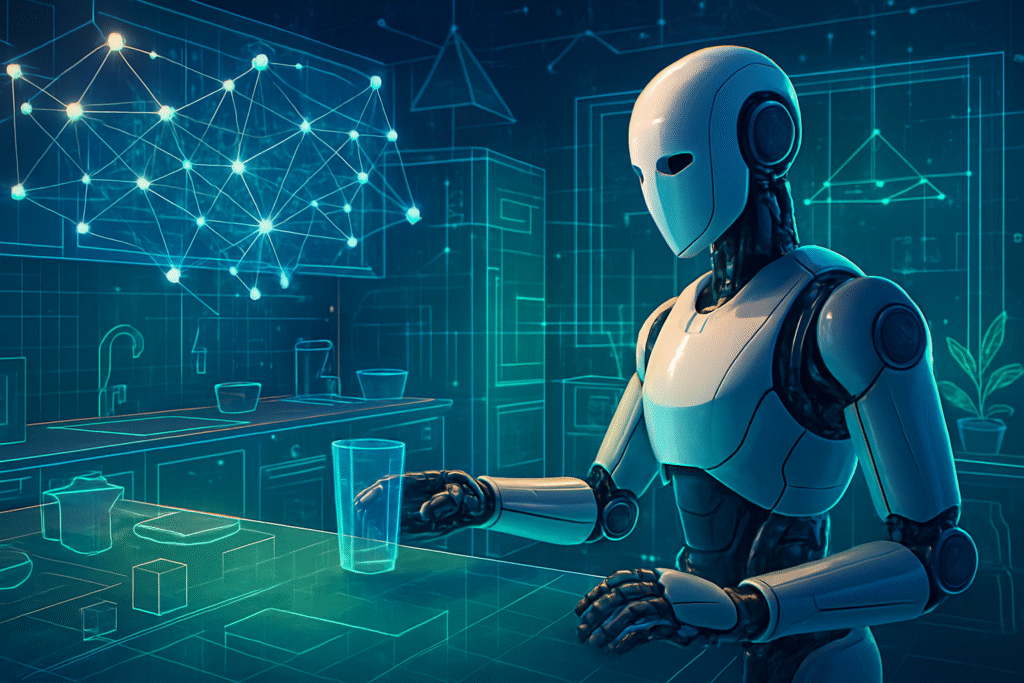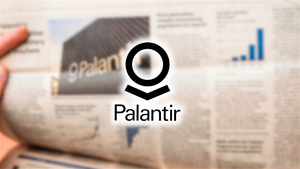
In a groundbreaking collaboration, researchers from the Massachusetts Institute of Technology (MIT) and the Toyota Research Institute (TRI) have unveiled a revolutionary AI tool designed to create vast, realistic, and diverse virtual environments for robot training. This innovative system, dubbed "Steerable Scene Generation," promises to dramatically accelerate the development of more intelligent and adaptable robots, marking a pivotal moment in the quest for truly versatile autonomous machines. By leveraging advanced generative AI, this breakthrough addresses the long-standing challenge of acquiring sufficient, high-quality training data, paving the way for robots that can learn complex skills faster and with unprecedented efficiency.
The immediate significance of this development cannot be overstated. Traditional robot training methods are often slow, costly, and resource-intensive, requiring either painstaking manual creation of digital environments or time-consuming real-world data collection. The MIT and Toyota AI tool automates this process, enabling the rapid generation of countless physically accurate 3D worlds, from bustling kitchens to cluttered living rooms. This capability is set to usher in an era where robots can be trained on a scale previously unimaginable, fostering the rapid evolution of robot intelligence and their ability to seamlessly integrate into our daily lives.
The Technical Marvel: Steerable Scene Generation and Its Deep Dive
At the heart of this innovation lies "Steerable Scene Generation," an AI approach that utilizes sophisticated generative models, specifically diffusion models, to construct digital 3D environments. Unlike previous methods that relied on tedious manual scene crafting or AI-generated simulations lacking real-world physical accuracy, this new tool is trained on an extensive dataset of over 44 million 3D rooms containing various object models. This massive dataset allows the AI to learn the intricate arrangements and physical properties of everyday objects.
The core mechanism involves "steering" the diffusion model towards a desired scene. This is achieved by framing scene generation as a sequential decision-making process, a novel application of Monte Carlo Tree Search (MCTS) in this domain. As the AI incrementally builds upon partial scenes, it "in-paints" environments by filling in specific elements, guided by user prompts. A subsequent reinforcement learning (RL) stage refines these elements, arranging 3D objects to create physically accurate and lifelike scenes that faithfully imitate real-world physics. This ensures the environments are immediately simulation-ready, allowing robots to interact fluidly and realistically. For instance, the system can generate a virtual restaurant table with 34 items after being trained on scenes with an average of only 17, demonstrating its ability to create complexity beyond its initial training data.
This approach significantly differs from previous technologies. While earlier AI simulations often struggled with realistic physics, leading to a "reality gap" when transferring skills to physical robots, "Steerable Scene Generation" prioritizes and achieves high physical accuracy. Furthermore, the automation of diverse scene creation stands in stark contrast to the manual, time-consuming, and expensive handcrafting of digital environments. Initial reactions from the AI research community and industry experts have been overwhelmingly positive. Jeremy Binagia, an applied scientist at Amazon Robotics (NASDAQ: AMZN), praised it as a "better approach," while the related "Diffusion Policy" from TRI, MIT, and Columbia Engineering has been hailed as a "ChatGPT moment for robotics," signaling a breakthrough in rapid skill acquisition for robots. Russ Tedrake, VP of Robotics Research at the Toyota Research Institute (NYSE: TM) and an MIT Professor, emphasized the "rate and reliability" of adding new skills, particularly for challenging tasks involving deformable objects and liquids.
Industry Tremors: Reshaping the Robotics and AI Landscape
The advent of MIT and Toyota's virtual robot playgrounds is poised to send ripples across the AI and robotics industries, profoundly impacting tech giants, specialized AI companies, and nimble startups alike. Companies heavily invested in robotics, such as Amazon (NASDAQ: AMZN) in logistics and BMW Group (FWB: BMW) in manufacturing, stand to benefit immensely from faster, cheaper, and safer robot development and deployment. The ability to generate scalable volumes of high-quality synthetic data directly addresses critical hurdles like data scarcity, high annotation costs, and privacy concerns associated with real-world data, thereby accelerating the validation and development of computer vision models for robots.
This development intensifies competition by lowering the barrier to entry for advanced robotics. Startups can now innovate rapidly without the prohibitive costs of extensive physical prototyping and real-world data collection, democratizing access to sophisticated robot development. This could disrupt traditional product cycles, compelling established players to accelerate their innovation. Companies offering robot simulation software, like NVIDIA (NASDAQ: NVDA) with its Isaac Sim and Omniverse Replicator platforms, are well-positioned to integrate or leverage these advancements, enhancing their existing offerings and solidifying their market leadership in providing end-to-end solutions. Similarly, synthetic data generation specialists such as SKY ENGINE AI and Robotec.ai will likely see increased demand for their services.
The competitive landscape will shift towards "intelligence-centric" robotics, where the focus moves from purely mechanical upgrades to developing sophisticated AI software capable of interpreting complex virtual data and controlling robots in dynamic environments. Tech giants offering comprehensive platforms that integrate simulation, synthetic data generation, and AI training tools will gain a significant competitive advantage. Furthermore, the ability to generate diverse, unbiased, and highly realistic synthetic data will become a new battleground, differentiating market leaders. This strategic advantage translates into unprecedented cost efficiency, speed, scalability, and enhanced safety, allowing companies to bring more advanced and reliable robotic products to market faster.
A Wider Lens: Significance in the Broader AI Panorama
MIT and Toyota's "Steerable Scene Generation" tool is not merely an incremental improvement; it represents a foundational shift that resonates deeply within the broader AI landscape and aligns with several critical trends. It underscores the increasing reliance on virtual environments and synthetic data for training AI, especially for physical systems where real-world data collection is expensive, slow, and potentially dangerous. Gartner's prediction that synthetic data will surpass real data in AI models by 2030 highlights this trajectory, and this tool is a prime example of why.
The innovation directly tackles the persistent "reality gap," where skills learned in simulation often fail to transfer effectively to the physical world. By creating more diverse and physically accurate virtual environments, the tool aims to bridge this gap, enabling robots to learn more robust and generalizable behaviors. This is crucial for reinforcement learning (RL), allowing AI agents to undergo millions of trials and errors in a compressed timeframe. Moreover, the use of diffusion models for scene creation places this work firmly within the burgeoning field of generative AI for robotics, analogous to how Large Language Models (LLMs) have transformed conversational AI. Toyota Research Institute (NYSE: TM) views this as a crucial step towards "Large Behavior Models (LBMs)" for robots, envisioning a future where robots can understand and generate behaviors in a highly flexible and generalizable manner.
However, this advancement is not without its concerns. The "reality gap" remains a formidable challenge, and discrepancies between virtual and physical environments can still lead to unexpected behaviors. Potential algorithmic biases embedded in the training datasets used for generative AI could be perpetuated in synthetic data, leading to unfair or suboptimal robot performance. As robots become more autonomous, questions of safety, accountability, and the potential for misuse become increasingly complex. The computational demands for generating and simulating highly realistic 3D environments at scale are also significant. Nevertheless, this development builds upon previous AI milestones, echoing the success of game AI like AlphaGo, which leveraged extensive self-play in simulated environments. It provides the "massive dataset" of diverse, physically accurate robot interactions necessary for the next generation of dexterous, adaptable robots, marking a profound evolution from early, pre-programmed robotic systems.
The Road Ahead: Charting Future Developments and Applications
Looking ahead, the trajectory for MIT and Toyota's virtual robot playgrounds points towards an exciting future characterized by increasingly versatile, autonomous, and human-amplifying robotic systems. In the near term, researchers aim to further enhance the realism of these virtual environments by incorporating real-world objects using internet image libraries and integrating articulated objects like cabinets or jars. This will allow robots to learn more nuanced manipulation skills. The "Diffusion Policy" is already accelerating skill acquisition, enabling robots to learn complex tasks in hours. Toyota Research Institute (NYSE: TM) has ambitiously taught robots over 60 difficult skills, including pouring liquids and using tools, without writing new code, and aims for hundreds by the end of this year (2025).
Long-term developments center on the realization of "Large Behavior Models (LBMs)" for robots, akin to the transformative impact of LLMs in conversational AI. These LBMs will empower robots to achieve general-purpose capabilities, enabling them to operate effectively in varied and unpredictable environments such as homes and factories, supporting people in everyday situations. This aligns with Toyota's deep-rooted philosophy of "intelligence amplification," where AI enhances human abilities rather than replacing them, fostering synergistic human-machine collaboration.
The potential applications are vast and transformative. Domestic assistance, particularly for older adults, could see robots performing tasks like item retrieval and kitchen chores. In industrial and logistics automation, robots could take over repetitive or physically demanding tasks, adapting quickly to changing production needs. Healthcare and caregiving support could benefit from robots assisting with deliveries or patient mobility. Furthermore, the ability to train robots in virtual spaces before deployment in hazardous environments (e.g., disaster response, space exploration) is invaluable. Challenges remain, particularly in achieving seamless "sim-to-real" transfer, perfectly simulating unpredictable real-world physics, and enabling robust perception of transparent and reflective surfaces. Experts, including Russ Tedrake, predict a "ChatGPT moment" for robotics, leading to a dawn of general-purpose robots and a broadened user base for robot training. Toyota's ambitious goals of teaching robots hundreds, then thousands, of new skills underscore the anticipated rapid advancements.
A New Era of Robotics: Concluding Thoughts
MIT and Toyota's "Steerable Scene Generation" tool marks a pivotal moment in AI history, offering a compelling vision for the future of robotics. By ingeniously leveraging generative AI to create diverse, realistic, and physically accurate virtual playgrounds, this breakthrough fundamentally addresses the data bottleneck that has long hampered robot development. It provides the "how-to videos" robots desperately need, enabling them to learn complex, dexterous skills at an unprecedented pace. This innovation is a crucial step towards realizing "Large Behavior Models" for robots, promising a future where autonomous systems are not just capable but truly adaptable and versatile, capable of understanding and performing a vast array of tasks without extensive new programming.
The significance of this development lies in its potential to democratize robot training, accelerate the development of general-purpose robots, and foster safer AI development by shifting much of the experimentation into cost-effective virtual environments. Its long-term impact will be seen in the pervasive integration of intelligent robots into our homes, workplaces, and critical industries, amplifying human capabilities and improving quality of life, aligning with Toyota Research Institute's (NYSE: TM) human-centered philosophy.
In the coming weeks and months, watch for further demonstrations of robots mastering an expanding repertoire of complex skills. Keep an eye on announcements regarding the tool's ability to generate entirely new objects and scenes from scratch, integrate with internet-scale data for enhanced realism, and incorporate articulated objects for more interactive virtual environments. The progression towards robust Large Behavior Models and the potential release of the tool or datasets to the wider research community will be key indicators of its broader adoption and transformative influence. This is not just a technological advancement; it is a catalyst for a new era of robotics, where the boundaries of machine intelligence are continually expanded through the power of virtual imagination.
This content is intended for informational purposes only and represents analysis of current AI developments.
TokenRing AI delivers enterprise-grade solutions for multi-agent AI workflow orchestration, AI-powered development tools, and seamless remote collaboration platforms.
For more information, visit https://www.tokenring.ai/.





